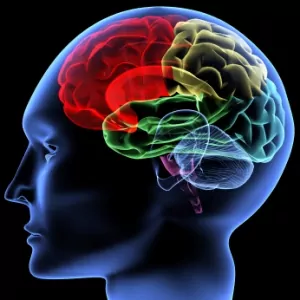
Brain
Functional brain activity in persistent postural-perceptual dizziness (PPPD) during galvanic vestibular stimulation reveals sensitization in the multisensory vestibular cortical network
What is PPPD and why study it?
Persistent postural‑perceptual dizziness (PPPD) is a chronic condition that causes ongoing dizziness and a sense of unsteadiness, especially when standing upright, moving, or in visually busy environments. It often follows a vestibular (balance) disorder, migraine, anxiety, or medication side effects. Although standard tests may no longer show abnormalities, sufferers remain sensitive to motion.
The researchers wondered: Could the brain itself become over‑excitable or “sensitized” to vestibular signals, even when the inner ear is functioning normally?
What did the study do?
- Enrolled 28 PPPD patients and 28 matched healthy people.
- Participants underwent galvanic vestibular stimulation (GVS) during an fMRI brain scan. This uses mild electrical pulses behind the ears to safely trigger sensations of movement.
- After each stimulus, they rated how strongly they felt they were moving (“egomotion”).
- Outside of the scanner, the team also assessed motion perception threshold, visual motion response, postural stability, and PPPD-related disability via questionnaires.
What were the findings?
- Lower motion threshold in PPPD: patients began to perceive motion at weaker GVS intensities than healthy controls.
- Stronger brain activation: In response to identical GVS, PPPD patients showed heightened neural activity in key multisensory brain regions: the supramarginal gyrus, insula (especially operculum 3), and the vermis of the cerebellum.
- No direct correlation between brain activity and subjective intensity: Even though patients felt more movement and showed stronger brain activation, the magnitude of brain activation didn’t scale directly with how intense each individual rated the sensation.
- Link to disability and imbalance: Greater insula activation during stimulation was associated with higher levels of PPPD-related disability and worse postural control.
What does it mean?
PPPD seems to involve sensory‑neural amplification — the brain overreacts to normal vestibular inputs, triggering stronger sensations of motion and neural responses. This happens despite no measurable damage in balance organs. The degree of brain hypersensitivity also aligns with how disabled and unstable patients feel in daily life.
This suggests new avenues for treatment — for example, therapies that desensitize the multisensory vestibular network (through graded exposure, neuromodulation, or vestibular rehabilitation) might help reduce symptoms and improve function.
Summary
- PPPD patients have heightened brain responses to vestibular stimulation.
- They feel motion more easily and more intensely than healthy people.
- Brain hypersensitivity is tied to greater dizziness-related disability.
- The findings point to brain-level overreactivity, not just inner ear problems, as driving PPPD — and suggest new treatment directions.
